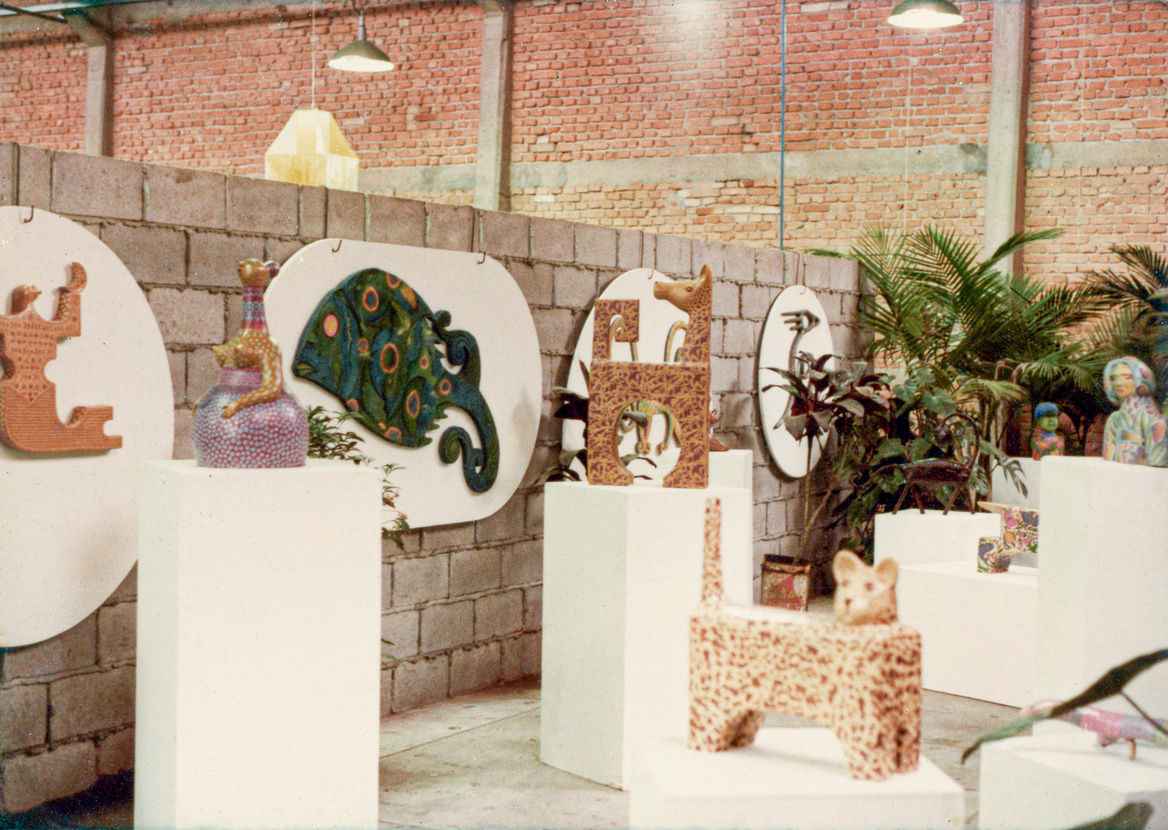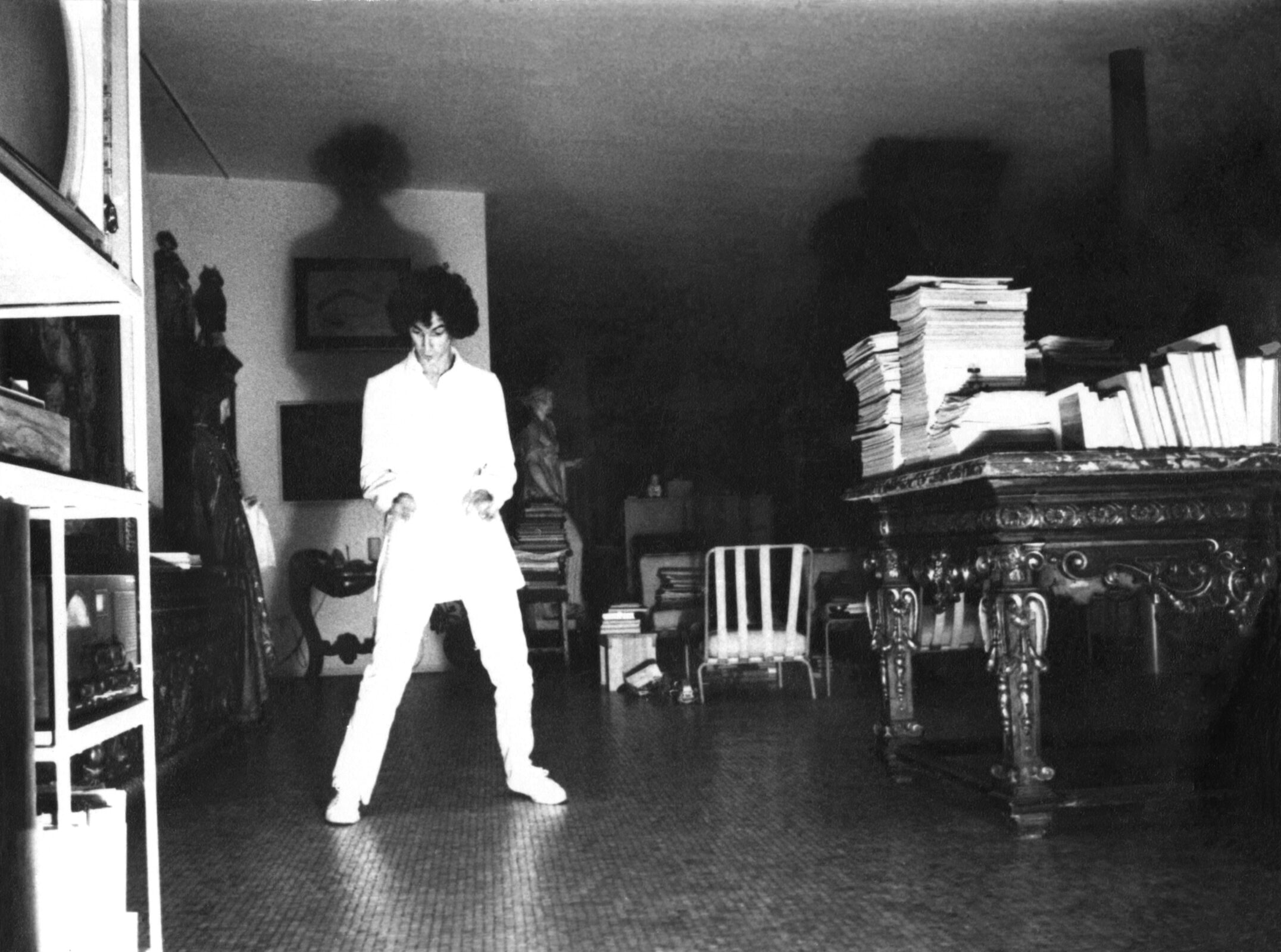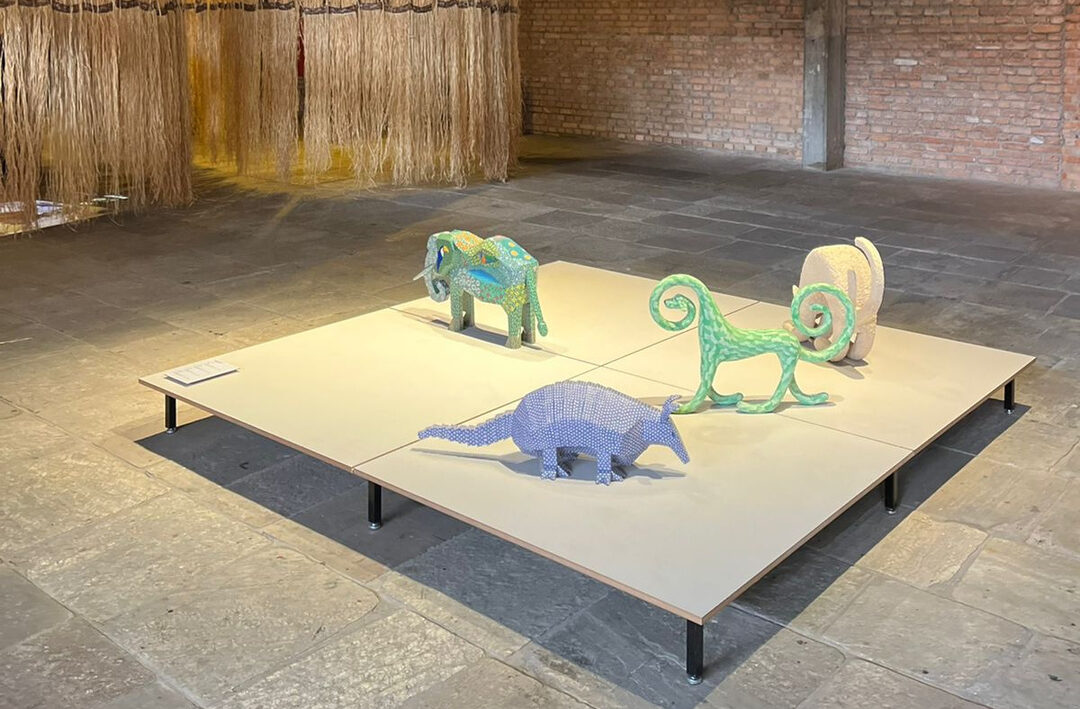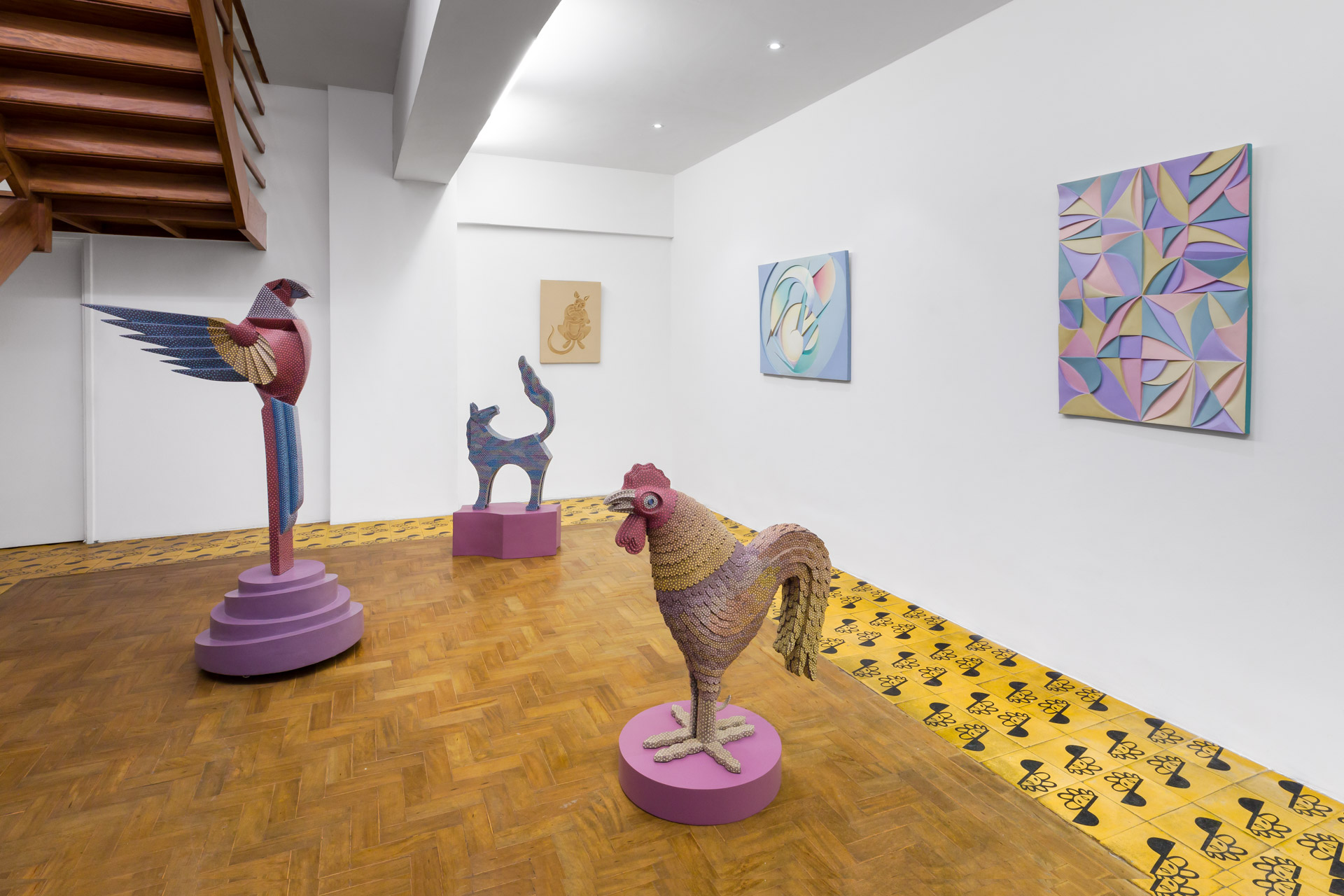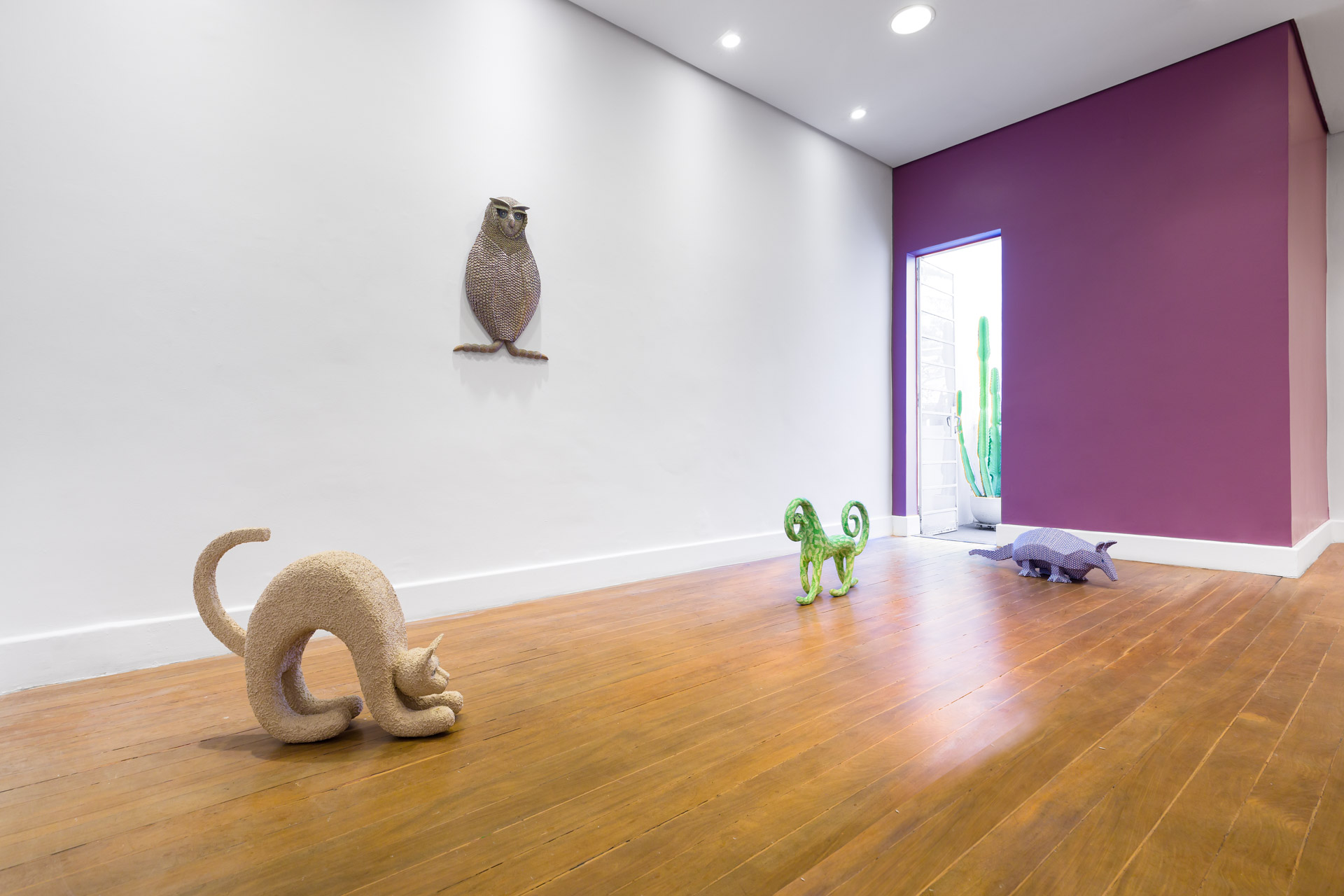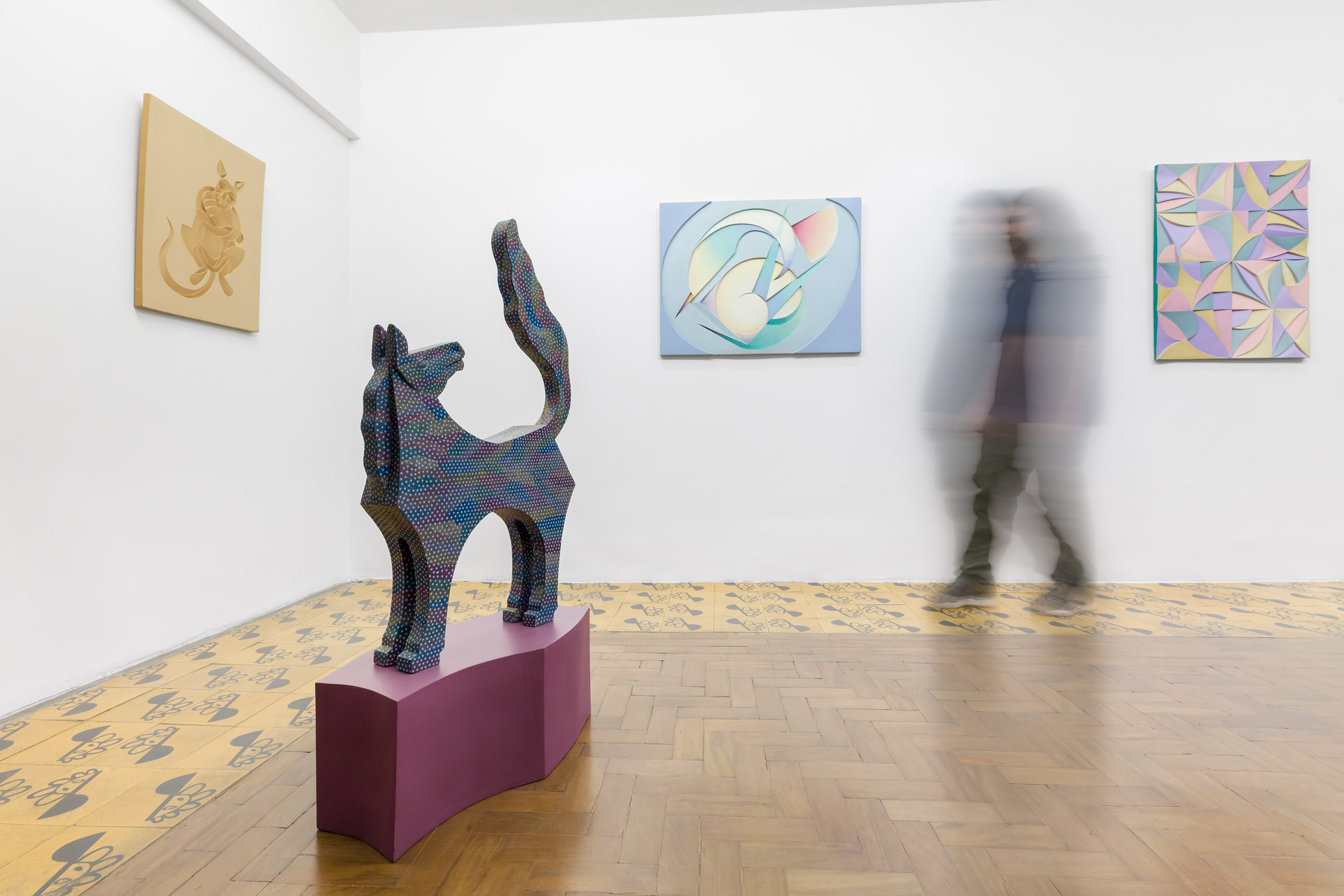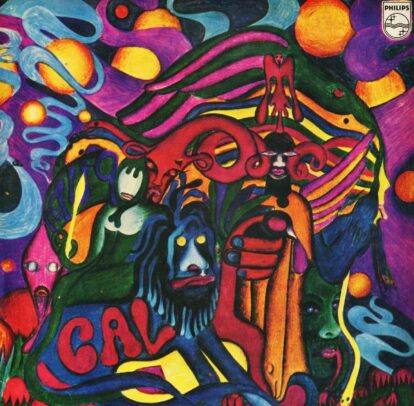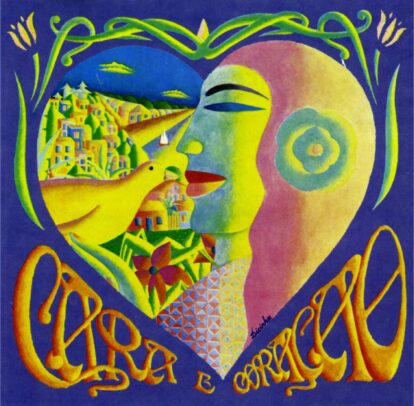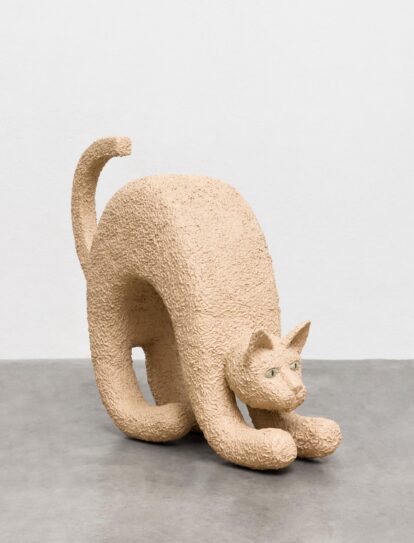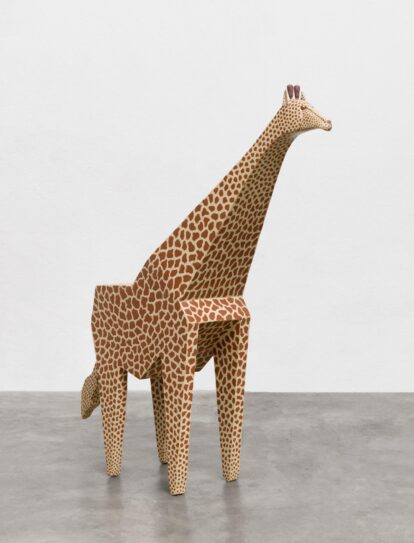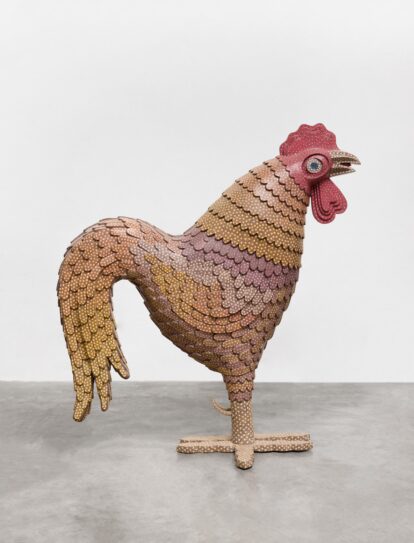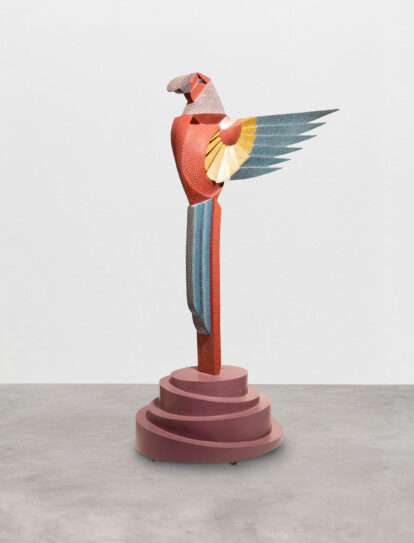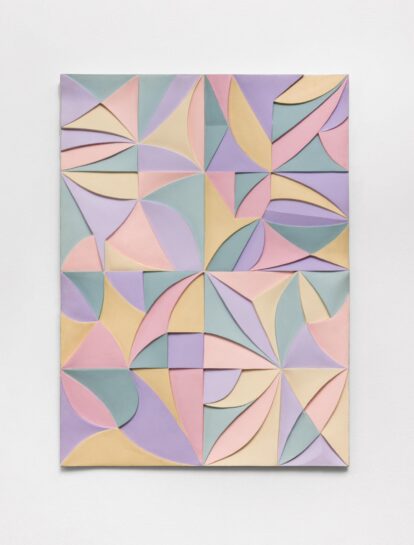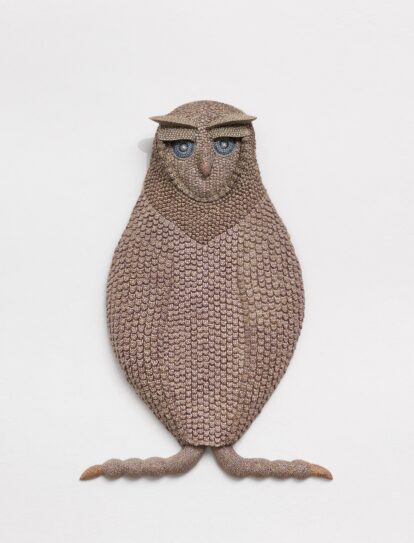Jequié, Bahia, Brazil, 1945 \ Lives and works in Salvador
Adilson Costa Carvalho, Mestre Dicinho, is one of the protagonists of the great cultural revolution of Tropicália. The movement innovated Brazilian artistic panorama with the fusion of tradition, avant-garde, and pop culture. The artist’s visual production, extensive and diverse, includes painting, illustration, sculpture, scenography, costume design, and performance. Of note, however, are the so-called “sculpture paintings” made of a paste, the COPAGETI (an acronym in Portuguese for glue, paper, plaster, and paint), developed by him in years of research. Later painted, the pieces reveal an aesthetic associated with tropicality and psychedelia, presenting different themes ranging from figurative depictions of animals and humans to elements of popular culture and geometric abstractions. With over 50 years of production, Dicinho has unique visual poetics. He is a self-exiled artist in his studio in Salvador, but he remains active, producing new works and seeing his work rediscovered.
Between the 1960s and 1980s, he worked with important figures in the Brazilian cultural scene, such as Lina Bo Bardi, Rogério Duarte, Edinízio Primo, Waly Salomão, Gilberto Gil, Gal Costa, Jards Macalé and José Celso Martinez Corrêa. He has participated in national and international exhibitions, highlighting the solo show Dicinho-Animais, curated by Lina Bo Bardi (Sesc Pompéia, São Paulo, 1983). His work was revisited in the show A todo vapor during the III Bienal da Bahia, curated by Ayrson Heráclito (Salvador, 2014), and was part of the group shows Histórias afro-atlânticas, curated by Adriano Pedrosa, Ayrson Heráclito, Hélio Menezes, Lilia Moritz Schwarcz and Tomás Toledo (Art Museum of São Paulo, 2018); Home Stories: 100 Years, 20 Visionary Interiors (Vitra Design Museum, Weil am Rhein, Germany, 2020) and A parábola do progresso, curated by Lisette Lagnado, André Pitol and Yudi Rafael (Sesc Pompeia, São Paulo, 2022-2023). Dicinho’s works are in the collections of the Instituto Bardi, the Museu de Arte Moderna da Bahia, and the Instituto Inhotim.
